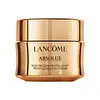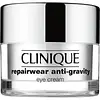What's inside
What's inside
 Key Ingredients
Key Ingredients

 Benefits
Benefits

 Concerns
Concerns

 Ingredients Side-by-side
Ingredients Side-by-side

Water
Skin ConditioningGlycerin
HumectantCyclohexasiloxane
EmollientButylene Glycol
HumectantAlcohol Denat.
AntimicrobialButyrospermum Parkii Butter
Skin ConditioningStearic Acid
CleansingStearyl Alcohol
EmollientCetyl Alcohol
EmollientPalmitic Acid
EmollientPEG-100 Stearate
Glyceryl Stearate
EmollientCera Alba
EmollientSodium Stearoyl Glutamate
CleansingOctyldodecanol
EmollientCI 77891
Cosmetic ColorantCI 19140
Cosmetic ColorantCI 16035
Cosmetic ColorantZea Mays Oil
EmulsifyingMica
Cosmetic ColorantTocopheryl Acetate
AntioxidantEscin
TonicTocopherol
AntioxidantAscorbyl Palmitate
AntioxidantHydroxypropyl Tetrahydropyrantriol
Skin ConditioningHydrolyzed Linseed Extract
Skin ConditioningSodium Benzoate
MaskingPhenoxyethanol
PreservativeAdenosine
Skin ConditioningPEG-20 Stearate
EmulsifyingTrisodium Ethylenediamine Disuccinate
Polysorbate 80
EmulsifyingChlorhexidine Digluconate
AntimicrobialPanthenol
Skin ConditioningPentaerythrityl Tetra-Di-T-Butyl Hydroxyhydrocinnamate
AntioxidantTin Oxide
AbrasivePropanediol
SolventPropylene Glycol
HumectantIsohexadecane
EmollientCapryloyl Salicylic Acid
ExfoliatingAcrylamide/Sodium Acryloyldimethyltaurate Copolymer
Emulsion StabilisingMyristic Acid
CleansingSorbitan Oleate
EmulsifyingGeraniol
PerfumingPassiflora Edulis Seed Oil
EmollientRose Extract
Skin ConditioningRosa Damascena Flower Oil
MaskingRosa Centifolia Flower Extract
AstringentTetrasodium Glutamate Diacetate
Citronellol
PerfumingCitric Acid
BufferingPrunus Armeniaca Kernel Oil
MaskingOryza Sativa Bran Oil
EmollientParfum
MaskingWater, Glycerin, Cyclohexasiloxane, Butylene Glycol, Alcohol Denat., Butyrospermum Parkii Butter, Stearic Acid, Stearyl Alcohol, Cetyl Alcohol, Palmitic Acid, PEG-100 Stearate, Glyceryl Stearate, Cera Alba, Sodium Stearoyl Glutamate, Octyldodecanol, CI 77891, CI 19140, CI 16035, Zea Mays Oil, Mica, Tocopheryl Acetate, Escin, Tocopherol, Ascorbyl Palmitate, Hydroxypropyl Tetrahydropyrantriol, Hydrolyzed Linseed Extract, Sodium Benzoate, Phenoxyethanol, Adenosine, PEG-20 Stearate, Trisodium Ethylenediamine Disuccinate, Polysorbate 80, Chlorhexidine Digluconate, Panthenol, Pentaerythrityl Tetra-Di-T-Butyl Hydroxyhydrocinnamate, Tin Oxide, Propanediol, Propylene Glycol, Isohexadecane, Capryloyl Salicylic Acid, Acrylamide/Sodium Acryloyldimethyltaurate Copolymer, Myristic Acid, Sorbitan Oleate, Geraniol, Passiflora Edulis Seed Oil, Rose Extract, Rosa Damascena Flower Oil, Rosa Centifolia Flower Extract, Tetrasodium Glutamate Diacetate, Citronellol, Citric Acid, Prunus Armeniaca Kernel Oil, Oryza Sativa Bran Oil, Parfum
Water
Skin ConditioningButyrospermum Parkii Butter
Skin ConditioningCetearyl Alcohol
EmollientButylene Glycol
HumectantHydrogenated Polyisobutene
EmollientPhenyl Trimethicone
Skin ConditioningPolyglyceryl-3 Beeswax
EmulsifyingPolybutene
Sucrose
HumectantPolymethyl Methacrylate
Cetyl Esters
EmollientIsostearyl Neopentanoate
EmollientGlycerin
HumectantCetearyl Glucoside
EmulsifyingLactis Proteinum
Skin ConditioningSigesbeckia Orientalis Extract
Skin ConditioningCamellia Sinensis Leaf Extract
AntimicrobialHordeum Vulgare Extract
EmollientTriticum Vulgare Germ Extract
Skin ConditioningChlorella Vulgaris Extract
Skin ConditioningYeast Extract
Skin ConditioningLinoleic Acid
CleansingCholesterol
EmollientCaffeine
Skin ConditioningPalmitoyl Oligopeptide
CleansingSqualane
EmollientPhytosphingosine
Skin ConditioningSodium Hyaluronate
HumectantDimethicone
EmollientCaprylyl Glycol
EmollientPEG-8
HumectantMethyl Glucose Sesquistearate
EmollientPolysilicone-11
Glyceryl Polymethacrylate
PEG-100 Stearate
Tocopheryl Acetate
AntioxidantStearic Acid
Cleansing1,2-Hexanediol
Skin ConditioningAcrylates/C10-30 Alkyl Acrylate Crosspolymer
Emulsion StabilisingSodium Dehydroacetate
PreservativeTetrahexyldecyl Ascorbate
AntioxidantAminomethyl Propanol
BufferingPotassium Sulfate
Phenoxyethanol
PreservativeDisodium EDTA
CI 77891
Cosmetic ColorantMica
Cosmetic ColorantWater, Butyrospermum Parkii Butter, Cetearyl Alcohol, Butylene Glycol, Hydrogenated Polyisobutene, Phenyl Trimethicone, Polyglyceryl-3 Beeswax, Polybutene, Sucrose, Polymethyl Methacrylate, Cetyl Esters, Isostearyl Neopentanoate, Glycerin, Cetearyl Glucoside, Lactis Proteinum, Sigesbeckia Orientalis Extract, Camellia Sinensis Leaf Extract, Hordeum Vulgare Extract, Triticum Vulgare Germ Extract, Chlorella Vulgaris Extract, Yeast Extract, Linoleic Acid, Cholesterol, Caffeine, Palmitoyl Oligopeptide, Squalane, Phytosphingosine, Sodium Hyaluronate, Dimethicone, Caprylyl Glycol, PEG-8, Methyl Glucose Sesquistearate, Polysilicone-11, Glyceryl Polymethacrylate, PEG-100 Stearate, Tocopheryl Acetate, Stearic Acid, 1,2-Hexanediol, Acrylates/C10-30 Alkyl Acrylate Crosspolymer, Sodium Dehydroacetate, Tetrahexyldecyl Ascorbate, Aminomethyl Propanol, Potassium Sulfate, Phenoxyethanol, Disodium EDTA, CI 77891, Mica
Ingredients Explained
These ingredients are found in both products.
Ingredients higher up in an ingredient list are typically present in a larger amount.
Butylene Glycol (or BG) is used within cosmetic products for a few different reasons:
Overall, Butylene Glycol is a safe and well-rounded ingredient that works well with other ingredients.
Though this ingredient works well with most skin types, some people with sensitive skin may experience a reaction such as allergic rashes, closed comedones, or itchiness.
Learn more about Butylene GlycolThis ingredient is also known as shea butter. It is an effective skin hydrator and emollient.
Emollients help soothe and soften your skin. It does this by creating a protective film on your skin. This barrier helps trap moisture and keeps your skin hydrated. Emollients may be effective at treating dry or itchy skin.
Shea butter is rich in antioxidants. Antioxidants help fight free-radicals, or molecules that may harm the body. It is also full of fatty acids including stearic acid and linoleic acid. These acids help replenish the skin and keep skin moisturized.
While Shea Butter has an SPF rating of about 3-4, it is not a sunscreen replacement.
Shea butter may not be fungal acne safe. We recommend speaking with a professional if you have any concerns.
Learn more about Butyrospermum Parkii ButterCi 77891 is a white pigment from Titanium dioxide. It is naturally found in minerals such as rutile and ilmenite.
It's main function is to add a white color to cosmetics. It can also be mixed with other colors to create different shades.
Ci 77891 is commonly found in sunscreens due to its ability to block UV rays.
Learn more about CI 77891Glycerin is already naturally found in your skin. It helps moisturize and protect your skin.
A study from 2016 found glycerin to be more effective as a humectant than AHAs and hyaluronic acid.
As a humectant, it helps the skin stay hydrated by pulling moisture to your skin. The low molecular weight of glycerin allows it to pull moisture into the deeper layers of your skin.
Hydrated skin improves your skin barrier; Your skin barrier helps protect against irritants and bacteria.
Glycerin has also been found to have antimicrobial and antiviral properties. Due to these properties, glycerin is often used in wound and burn treatments.
In cosmetics, glycerin is usually derived from plants such as soybean or palm. However, it can also be sourced from animals, such as tallow or animal fat.
This ingredient is organic, colorless, odorless, and non-toxic.
Glycerin is the name for this ingredient in American English. British English uses Glycerol/Glycerine.
Learn more about GlycerinMica is a naturally occurring mineral used to add shimmer and color in cosmetics. It can also help improve the texture of a product or give it an opaque, white/silver color.
Serecite is the name for very fine but ragged grains of mica.
This ingredient is often coated with metal oxides like titanium dioxide. Trace amounts of heavy metals may be found in mica, but these metals are not harmful in our personal products.
Mica has been used since prehistoric times throughout the world. Ancient Egyptian, Indian, Greek, Roman, Aztec, and Chinese civilizations have used mica.
Learn more about MicaPeg-100 Stearate is an emollient and emulsifier. As an emollient, it helps keep skin soft by trapping moisture in. On the other hand, emulsifiers help prevent oil and water from separating in a product.
PEGS are a hydrophilic polyether compound . There are 100 ethylene oxide monomers in Peg-100 Stearate. Peg-100 Stearate is polyethylene glycol ester of stearic acid.
Phenoxyethanol is a preservative that has germicide, antimicrobial, and aromatic properties. Studies show that phenoxyethanol can prevent microbial growth. By itself, it has a scent that is similar to that of a rose.
It's often used in formulations along with Caprylyl Glycol to preserve the shelf life of products.
Stearic Acid is a fatty acid. It is an emollient, emulsifier, and texture enhancer.
As an emollient, stearic acid helps soften skin. It aids the skin's protective barrier by preventing water loss. It also provides a gentle cleansing effect without stripping away natural oils.
Stearic acid may also be used to enhance the texture of products. It can add volume and stabilize ingredients such as water and oil. This can help water and oil ingredients from separating.
Sources of stearic acid include animal or vegetable fats/oils such as coconut or shea. It can be naturally found in butter, cocoa butter, shea butter, vegetable fats, and animal tallow.
This ingredient may not be Malassezia folliculitis, or fungal-acne safe.
Learn more about Stearic AcidTocopheryl Acetate is AKA Vitamin E. It is an antioxidant and protects your skin from free radicals. Free radicals damage the skin by breaking down collagen.
One study found using Tocopheryl Acetate with Vitamin C decreased the number of sunburned cells.
Tocopheryl Acetate is commonly found in both skincare and dietary supplements.
Learn more about Tocopheryl AcetateWater. It's the most common cosmetic ingredient of all. You'll usually see it at the top of ingredient lists, meaning that it makes up the largest part of the product.
So why is it so popular? Water most often acts as a solvent - this means that it helps dissolve other ingredients into the formulation.
You'll also recognize water as that liquid we all need to stay alive. If you see this, drink a glass of water. Stay hydrated!
Learn more about Water